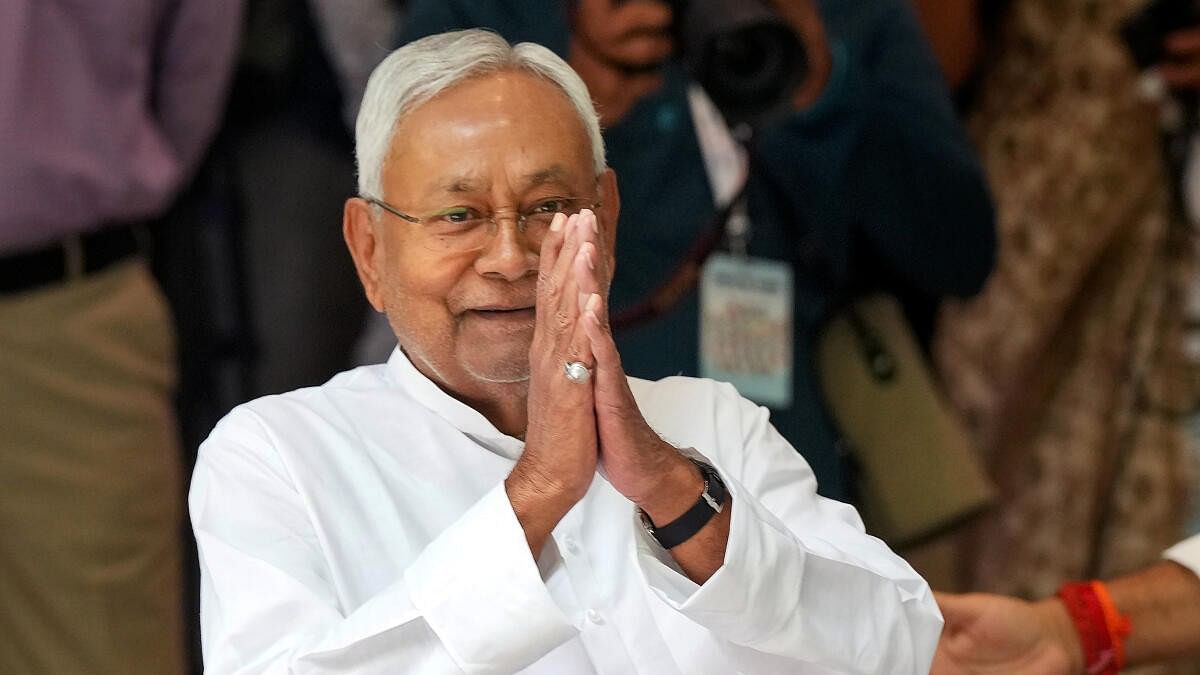
Bihar CM Nitish Kumar.
Credit: PTI Photo
A recent tour of a senior minister in the Nitish Kumar government to Uttar Pradesh has created a stir in political circles on whether the Bihar Chief Minister is exploring the possibility of contesting next year’s Lok Sabha polls from the battleground state.
The speculations have been triggered by Bihar Rural Development and Parliamentary Affairs Minister Shrawan Kumar’s visit to 17 Uttar Pradesh districts with a large Kurmi population including Phulpur, Ambedkarnagar, Pratapgarh, and Jaunpur to get a “sense of the people’s mood.” Kumar, a confidante of Bihar CM, recently replaced KC Tyagi as the JD(U) point person for Uttar Pradesh.
Speaking to DH from Basti in eastern Uttar Pradesh on Sunday evening, Kumar said he has been holding meetings with the party sympathisers for the last two months.
“It is for the party to decide from where Nitish Kumar will contest if he decides to. But our aim is to expand and strengthen I.N.D.I.A,” Kumar said.
With Lok Sabha elections in sight, I.N.D.I.A parties are looking to think beyond the conventional caste calculus to undercut BJP’s non-Yadav backward mobilisation in Uttar Pradesh which sends 80 MPs to the lower house. The Opposition in UP is divided with BSP having already announced its decision to go solo.
With the Opposition divided, a spate of desertion by OBC leaders and allies of the Samajwadi Party has come as a shot in the arm for the BJP.
In the last two parliamentary elections, Kurmis, a major OBC caste that is numerically and economically second to Yadavs in UP, have consolidated behind the BJP. In the 2022 Assembly polls, 41 MLAs from the community won on the BJP symbol while six MPs from the community are currently in the Lok Sabha. The trend was set in motion with the BJP’s ascension to power in 2014 with the consolidation of non-Yadav backward castes by the saffron party as the party struck a tactical alliance with sub-regional caste-based outfits like union minister Anupriya Patel’s Apna Dal.
Prior to that, Kurmis in Uttar Pradesh were split between the three dominant forces - a large section in the Rohilkhand region around Bareilly was the BJP voter. In central UP, Samajwadi Party leaders like Beni Verma held sway while in east Uttar Pradesh and Bundelkhand, Kurmi was aligned to BSP.
Like Modi’s foray from Varanasi in 2014, Kumar’s subtle projection - who belongs to the Kurmi community - as a non-Yadav backward leader is now ostensibly being tested to gauge implications in electoral politics not just in Uttar Pradesh, Bihar, and Jharkhand.
Kurmis/Patels are influential landowning intermediary castes in the north, central, and west like Patels of Gujarat, Kunabis of Maharashtra, and Patidar of Madhya Pradesh.
For instance, in Chhattisgarh, the community holds the key to power in a large section of the central rice belt. The state CM Bhupesh Baghel belongs to the community.